Rubber hoses are essential pieces of equipment for many industrial and commercial applications. There are many different types of rubber hoses, each with their own unique benefits and features. In this comprehensive guide, we will answer some of the most common questions about rubber hoses. We’ll cover everything from what rubber hoses are used for to how to select the right hose for your needs. So whether you’re just starting out and you need to learn more about rubber hoses, or you’re an experienced professional looking for a refresher course, read on!
Rubber Hoses: Everything You’ll Ever Need to Know
- Industrial vs Domestic hoses
- Industrial rubber hoses
- Domestic rubber hoses
- How Rubber Hoses are Made
- Different types of materials used in rubber hoses
- How to choose the right hose for your needs
- Common Accessories and parts for hoses
- Common Industrial Use Cases/Hose Types
- Different sectors where hoses are used
- Common Domestic Use Cases
- Rubber hose pipes for water
- Rubber hoses for cars
- Domestic drainage applications
- Maintenance and Disposal of Rubber Hoses
- Common defects in rubber hoses
- How to repair a rubber hose
- When to replace vs repair a rubber hose
- How to store your hose properly
- How to clean rubber hoses
- How long do rubber hoses last?
- Can rubber hoses be recycled?
- Signs that it’s time to replace (not repair) your hose
-
FAQs about Rubber Hoses
-
Wrapping up
Industrial vs Domestic hoses
The first thing to know about rubber hoses is that there are two main types: industrial and domestic. Industrial rubber hoses are intended for use in heavy-duty applications such as factories, construction sites, and other environments where they will be subject to high levels of wear and tear. Domestic rubber hoses, on the other hand, are designed for use in the home and other less demanding applications.
Now that you know the difference between industrial and domestic rubber hoses, let’s take a closer look at each type.
Industrial rubber hoses
As we mentioned, industrial rubber hoses are designed for heavy-duty applications. They are often made of thicker, more durable materials than domestic hoses. This means that they can withstand more wear and tear and last longer in demanding environments. Industrial rubber hoses are also typically wider in diameter than domestic hoses, which allows for greater flow rates.
Some common examples of industrial rubber hoses include:
- Air hose: An air hose is used to carry air from a compressor to tools or other equipment.
- Water hose: A water hose is used to carry water for irrigation, construction, or other purposes.
- Steam hose: A steam hose is used to carry steam for heating or cleaning applications.
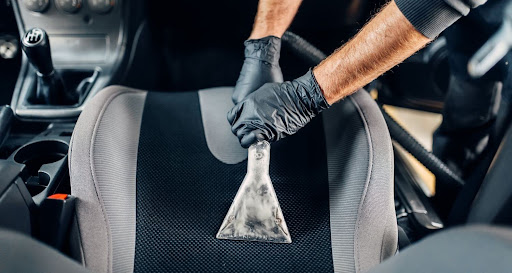
- Welding hose: A welding hose is used to carry welding gases from a tank to a welding torch.
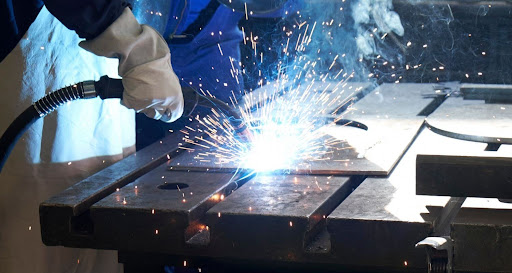
Domestic rubber hoses
As we mentioned, domestic rubber hoses are designed for use in the home and other less demanding applications. They are often made of thinner, less durable materials than industrial hoses. This means that they will not last as long in demanding environments but they are typically cheaper than industrial hoses. Domestic rubber hoses are also typically smaller in diameter than industrial hoses, which limits the flow rate.
Some common examples of domestic rubber hoses include:
- Garden hose: A garden hose is used to water plants or wash vehicles.
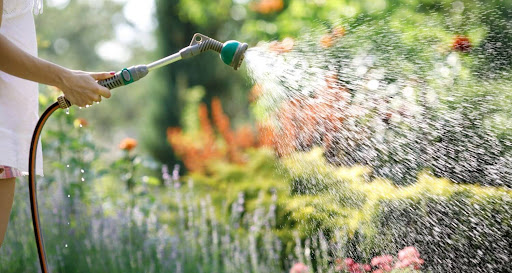
- Shower hose: A shower hose is used to carry water from the shower head to the shower.
- Dishwasher hose: A dishwasher hose is used to carry water from the dishwasher to the sink.
- Washing machine hose: A washing machine hose is used to carry water from the washing machine to the drain.
How Rubber Hoses are Made
Rubber hoses are made of three main components: the tube, the reinforcement, and the cover. The tube is the innermost component and it is typically made of synthetic rubber or thermoplastic rubber. The reinforcement is the middle layer and it is typically made of one or more layers of textile cord or steel wire. The cover is the outermost layer and it is typically made of synthetic rubber, thermoplastic rubber, or polyurethane.
The three components are then joined together using a process called vulcanization. Vulcanization is a process where the rubber is exposed to heat and chemicals in order to improve its strength and durability. After vulcanization, the rubber hose is then ready to be used.
Different types of materials used in rubber hoses
The type of rubber hose you need will depend on the application you are using it for. Different rubber hoses are made of different materials, which means they have different strengths and weaknesses.
Some common rubber hose materials include:
- Natural rubber: Natural rubber is a popular material for rubber hoses because it is inexpensive and has good abrasion resistance.
- Butyl rubber: Butyl rubber is a synthetic rubber that is known for its excellent airtightness.
- Neoprene rubber: Neoprene rubber is a synthetic rubber that has good heat resistance and weather resistance.
- EPDM rubber: EPDM rubber is a synthetic rubber that has excellent UV resistance and weather resistance.
How to choose the right hose for your needs
When selecting a rubber hose, you need to consider the following:
- The diameter of the hose
- The length of the hose
The working pressure of the hose - The burst pressure of the hose
- The temperature range of the hose
If you’re not 100% sure about your specifications for each of these requirements, it’s best to speak to a hose expert like those at All Hose and Valves – with decades of industry experience, they can guide you in the right hose type for your application.
You also need to consider what type of rubber hose you need. There are three main types of rubber hoses:
- Industrial rubber hoses – these hoses are designed for use in industrial applications. They are usually made from heavy-duty rubber and have higher working pressures than other types of rubber hoses.
- Layflat hoses – these hoses are designed for use in low-pressure applications. They are usually made from lightweight rubber and have lower working pressures than other types of rubber hoses.
- Hydraulic hoses – these hoses are designed for use in high-pressure applications. They are usually made from reinforced rubber and have higher working pressures than other types of rubber hoses.
Picking the right rubber hose is important because it will ensure that the hose can withstand the conditions it will be used in.
If you pick a rubber hose that is not suited for the application, it could fail and cause serious damage.
Common Accessories and parts for hoses
Rubber hose nozzle: A rubber hose nozzle is a device that is attached to the end of a rubber hose. It is used to control the flow of liquids or gases from the rubber hose.
Rubber hose coupling: A rubber hose coupling, or connector, is a device that is used to connect two pieces of rubber hose together.
Rubber hose clamps: Rubber hose clamps are devices that are used to secure rubber hoses to other objects.
Rubber hose washers: Rubber hose washers are devices that are used to create a watertight seal between two pieces of rubber hose.
Rubber hose end cap: As the name indicates, an end cap is a device that is used to seal the end of a rubber hose.
Rubber hose Fittings: Rubber hose fittings, also known as gaskets, are devices that are used to connect rubber hoses to other objects, including other hoses.
Common Industrial Use Cases/Hose Types
Multipurpose Oil Resistant Hose: This rubber hose is perfect for handling petroleum-based oils. It is also resistant to abrasion, so it can withstand being dragged across the ground.
Bulk Material Handling Hose: This rubber hose is perfect for handling bulk materials, such as sand, gravel, and cement.
Dredge Sleeve Hose: This rubber hose is perfect for dredging operations. It has a smooth bore and is abrasion-resistant.
Washdown Hose: This rubber hose is perfect for high-pressure washdown applications.
Chemical Transfer Hose: This rubber hose is perfect for transferring chemicals from one place to another.
Air & Water Hose: commonly used in industrial applications to transfer air or water from one machine to another, cleaning equipment with high-pressure water, and pumping fluids in a manufacturing process.
Fuel Line/Vapor Emission Hose: Vapor emission hoses are rubber hoses that are used to handle fuel and vapour. They can be used in a variety of applications, including agricultural irrigation and construction.
Layflat hoses: Layflat hoses are rubber hoses that are designed to be very flexible. They can be bent into a variety of shapes and are perfect for applications where a traditional rubber hose would not work. The most common use cases for layflat hoses include agricultural irrigation, mining and construction/engineering applications.
Automotive hoses: Automotive hoses are rubber hoses that are used in automotive applications. They can be used for a variety of purposes, including carrying fluids, ventilation, and exhaust.
Fire hoses: Fire hoses are rubber hoses that are used by firefighters to carry water from the fire truck to the fire. Fire hoses are rubber hoses that are specifically designed to handle high pressure and high temperatures. They typically have a very high pressure rating and a high temperature rating. They are also abrasion-resistant, so they can withstand being dragged across the ground.
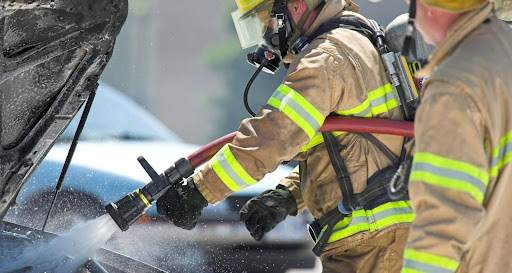
Flood cleanup hoses: Flood cleanup hoses are rubber hoses that are used to remove water from an area that has been flooded. They typically have a very high capacity and can handle a large amount of water.
Pneumatic/Hydraulic Hoses: Pneumatic hoses are rubber hoses that are used to carry air. Hydraulic hoses are rubber hoses that are used to carry fluids. Both types of hoses are used in a variety of applications, including automotive, industrial, and construction.
Different sectors where hoses are used
- Agricultural irrigation
- Mining
- Construction/engineering
- Automotive
- Firefighting
- Flood cleanup
- Industrial applications
- Pneumatic applications
- Hydraulic applications
Common Domestic Use Cases
Rubber hose pipes for water
When you think of hoses around the house, you probably think about:
- Washing the car
- Cleaning the gutters
- Spraying down the driveway or patio
- Watering the plants
- Filling up the pool
- Washing the dog
They’re called “flexible” hoses for a reason! 🙂
Rubber hoses for cars
Cars have rubber hoses for:
- The engine (to carry oil and coolant)
- The brakes (to carry brake fluid)
- The transmission (to carry transmission fluid)
- The power steering system (to carry power steering fluid)
- The air conditioning system (to carry refrigerant)
Domestic drainage applications
You’ve probably got hose pipes in more places than you realise. They’re always working hard behind the scenes (and walls) to keep things moving – as a rule of thumb, if you don’t know the hose is there, that means it’s doing a good job!
Although rubber isn’t the only material used for drainage pipes, it’s not uncommon either. Rubber hose pipes for waste water drainage can appear in a number of places:
- In the kitchen – carrying wastewater from sink and dishwasher to the sewer
- In the bathroom – carrying wastewater from shower, sink, and toilet to the sewer
- In the laundry – carrying wastewater from washing machine and clothes dryer to the sewer
- Outside – carrying stormwater runoff to a drain or sewage system rubber hose pipes are an essential part of any plumbing system.
Maintenance and Disposal of Rubber Hoses
Rubber hoses should be inspected on a regular basis and replaced as needed. rubber hoses have a limited lifespan and will eventually need to be replaced.When disposing of rubber hoses, it is important to follow the proper protocols to ensure that they are disposed of safely and correctly. Rubber hoses can be recycled, but they must first
Common defects in rubber hoses
Rubber hoses are susceptible to a number of common defects, especially as they age. These include:
- Abrasion
- Cracking
- Ozone degradation
- UV degradation
- Holes or punctures
It is important to inspect rubber hoses regularly for these defects and replace them as needed.
How to repair a rubber hose
If a rubber hose has a hole or puncture, it can be repaired using a rubber patch or silicone repair tape. To do this, cut a piece of rubber that is slightly larger than the hole or puncture. Clean the surface of the rubber hose around the hole or puncture and apply a thin layer of rubber cement to the surface. Place the rubber patch over the hole or puncture and press it into place. Apply another thin layer of rubber cement or similar high-grade adhesive to the surface of the rubber patch. Allow the rubber cement to dry for 24 hours before using the hose.
When to replace vs repair a rubber hose
There are a few factors to consider when deciding whether to repair or replace a rubber hose:
- The age of the rubber hose
- The severity of the damage
- The type of rubber hose
- The cost of repair vs replacement
In most cases, it is best to replace a rubber hose that is damaged. This is because rubber hoses have a limited lifespan and will eventually need to be replaced. rubber hoses are also susceptible to a number of common defects, which can make them more difficult to repair.
How to store your hose properly
Rubber hoses should be stored in a cool, dry place out of direct sunlight. Rubber hoses can be damaged by heat, cold, and UV rays, so it is important to store them properly. Rubber hoses should also be stored away from sharp objects that could puncture or cut them.
When not in use, rubber hoses should be stored in a hose reel or similar storage device. This will help to keep them organized and protected from damage.
How to clean rubber hoses
Rubber hoses can be cleaned using a variety of methods, depending on the type of rubber hose and the amount of dirt and grime. For light cleaning, rubber hoses can be wiped down with a damp cloth or sponge. For more difficult cleaning jobs, rubber hoses can be cleaned using a pressure washer or power washer. In some cases, rubber hoses can also be cleaned using a solvent-based cleaner.
It is important to follow the manufacturer’s instructions when cleaning rubber hoses. This will ensure that the rubber hose is not damaged during the cleaning process.
Cleaning rubber hoses is an important part of maintaining them. Hoses should be cleaned on a regular basis to remove dirt, grime, and other debris.
How long do rubber hoses last?
Rubber hoses have a limited lifespan and will eventually need to be replaced. rubber hoses are susceptible to a number of common defects, which can make them more difficult to repair. In most cases, it is best to replace a rubber hose that is damaged.
The lifespan of a rubber hose depends on a number of factors, including:
- The type of rubber hose
- The environment in which the rubber hose is used
- The amount of use the rubber hose receives
In general, rubber hoses should be replaced every three to five years. However, this can vary depending on the factors listed above. It is important to inspect rubber hoses regularly for signs of wear and tear. Hoses that are damaged or showing signs of wear and tear should be replaced as soon as possible.
Can rubber hoses be recycled?
No. You should never put your old hoses into your recycling bin. They are one of the worst items for people at the recycling plant to deal with as they get tangled with other recyclables and can be a nightmare to extract and remove, as well as having the potential to cause machine breakdowns and become a safety issue for workers.
To dispose of your old rubber hose, you should put it into your general waste bin – for the same reason as listed above, it is a good idea to first cut the hose into smaller segments to prevent it from getting tangled during transport to landfill.
Important note: If your hose has been used to carry toxic or corrosive materials you should take extra care when handling and disposing of the hose as it may pose a health risk to you and others. When in doubt follow the manufacturer’s instructions.
Signs that it’s time to replace (not repair) your hose
Sadly, all good things must come to an end (yes, even this article) – here are a few signs that it is time to replace your rubber hose:
- More than three to five years old
- Leaking fluids
- Cracks or tears in the rubber
- Bulges or deformities in the rubber
- Holes or punctures in the rubber
- Excessive wear and tear
- Chemical damage
- UV damage (faded/brittle/cracked)
If you notice any of the above signs, it’s time to replace your rubber hose.
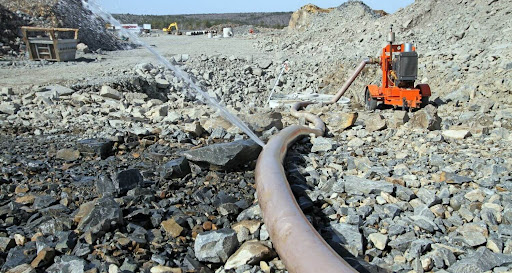
FAQs about Rubber Hoses
Are rubber hoses safe to drink from?
No. Rubber hoses are not safe to drink from. rubber hoses are made of materials that can leach chemicals into water, which can be harmful to your health.
Can rubber hoses be used for fuel?
No. Rubber hoses are not designed for use with fuel. Fuel can damage rubber hoses and cause them to leak.
Can rubber hoses be used for oil?
No. Rubber hoses are not designed for use with oil. Oil can damage rubber hoses and cause them to leak.
Do rubber hoses contain BPA?
No. Rubber hoses do not contain BPA. BPA is a chemical that is found in some plastics. rubber hoses are made of rubber, which does not contain BPA.
What is the difference between rubber and PVC hoses?
PVC hoses are made of polyvinyl chloride, which is a type of plastic. rubber hoses are made of rubber. Rubber is a natural material that is made from the sap of rubber trees. PVC is a synthetic material that is made from chemicals.
Which is better rubber hoses or [insert any other type of material here]?
There is no definitive answer to this question. It depends on your needs and preferences. Vynil hoses are more flexible than rubber hoses, but less durable. PVC hoses are less likely to kink than rubber hoses, but they are also more brittle and can rupture if subjected to too much pressure. Understanding your use case is the most crucial step in any hose purchase so you can get the right type – for efficiency, longevity and safety.
Where to buy your next rubber hose
All Hose and Valves is South-East Queensland’s leading supplier of hoses of all types, as well as fittings, valves, clamps and numerous other accessories tailored for industrial, commercial and automotive applications. With store locations in Caboolture, Brisbane and the Gold Coast, and an experienced team of hose enthusiasts ready to take your call, there’s never been a better time (or place) to buy your next rubber hose! Visit us in-store, browse our website or give us a call today.
Wrapping up
(Sorry, couldn’t resist the pun…)
Rubber hoses are one of the most versatile and widely used products in the world. There are countless types of rubber hoses, each with their own unique uses and benefits.
We hope you found this rubber hose resource helpful and informative. If you have any questions that we didn’t cover, feel free to leave a comment below and we’ll do our best to get back to you ASAP.
And remember, when in doubt – always consult the manufacturer’s instructions! Stay safe out there rubber hosers! Keep it reel! (Okay, last one, we promise…)
